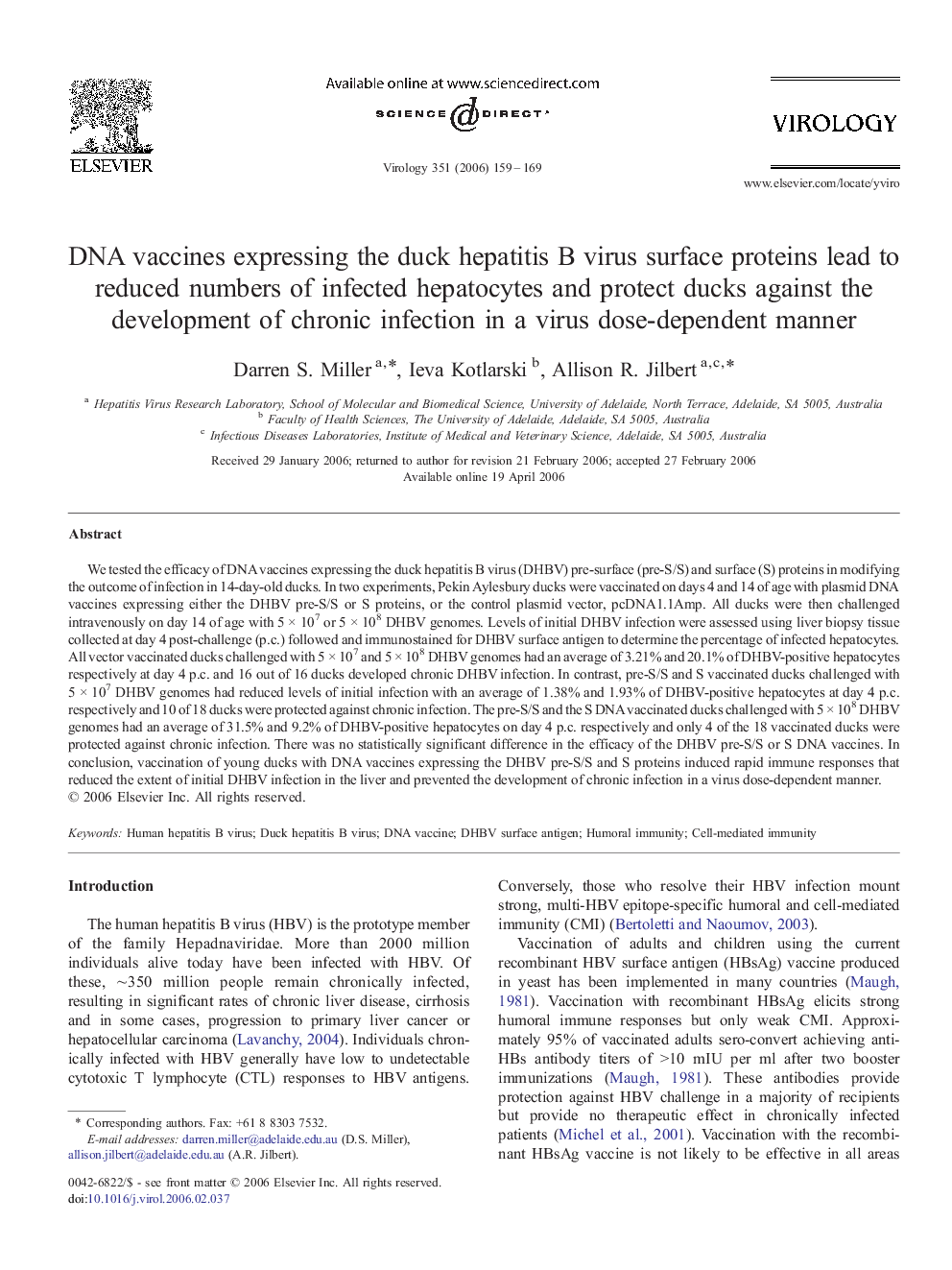| Article ID | Journal | Published Year | Pages | File Type |
|---|---|---|---|---|
| 3426830 | Virology | 2006 | 11 Pages |
We tested the efficacy of DNA vaccines expressing the duck hepatitis B virus (DHBV) pre-surface (pre-S/S) and surface (S) proteins in modifying the outcome of infection in 14-day-old ducks. In two experiments, Pekin Aylesbury ducks were vaccinated on days 4 and 14 of age with plasmid DNA vaccines expressing either the DHBV pre-S/S or S proteins, or the control plasmid vector, pcDNA1.1Amp. All ducks were then challenged intravenously on day 14 of age with 5 × 107 or 5 × 108 DHBV genomes. Levels of initial DHBV infection were assessed using liver biopsy tissue collected at day 4 post-challenge (p.c.) followed and immunostained for DHBV surface antigen to determine the percentage of infected hepatocytes. All vector vaccinated ducks challenged with 5 × 107 and 5 × 108 DHBV genomes had an average of 3.21% and 20.1% of DHBV-positive hepatocytes respectively at day 4 p.c. and 16 out of 16 ducks developed chronic DHBV infection. In contrast, pre-S/S and S vaccinated ducks challenged with 5 × 107 DHBV genomes had reduced levels of initial infection with an average of 1.38% and 1.93% of DHBV-positive hepatocytes at day 4 p.c. respectively and 10 of 18 ducks were protected against chronic infection. The pre-S/S and the S DNA vaccinated ducks challenged with 5 × 108 DHBV genomes had an average of 31.5% and 9.2% of DHBV-positive hepatocytes on day 4 p.c. respectively and only 4 of the 18 vaccinated ducks were protected against chronic infection. There was no statistically significant difference in the efficacy of the DHBV pre-S/S or S DNA vaccines. In conclusion, vaccination of young ducks with DNA vaccines expressing the DHBV pre-S/S and S proteins induced rapid immune responses that reduced the extent of initial DHBV infection in the liver and prevented the development of chronic infection in a virus dose-dependent manner.
